Picture a herd of cows. They wade lazily through green grass, tails flicking, jaws chewing. Around their feet struts a small, white egret with a ginger crest, while another rides atop a cow’s rump.
It’s a familiar sight, and most birders don’t think twice when they see a cattle egret lurking in a herd’s wake. But these unassuming little egrets are downright impressive. In the past 150 years, cattle egrets have self-populated nearly every continent on earth. Just how, and why, remains somewhat of a mystery.
Continental Hopscotch
At first glance, the cattle egret (Bubuclus ibis) looks like just another unassuming small white heron or egret. They have white plumage, with greenish-black legs and a yellow bill, lores, and iris.
During the breeding season their coloration changes, their feathers turning a russet orange on the bird’s head, neck, chest, and back. The intensity and placement of their coloration varies by subspecies. The cattle egret’s beak also transforms into a sherbet-inspired rainbow, from yellow at the tip, blending to red, and then purple-pink around bird’s lores and eyes.
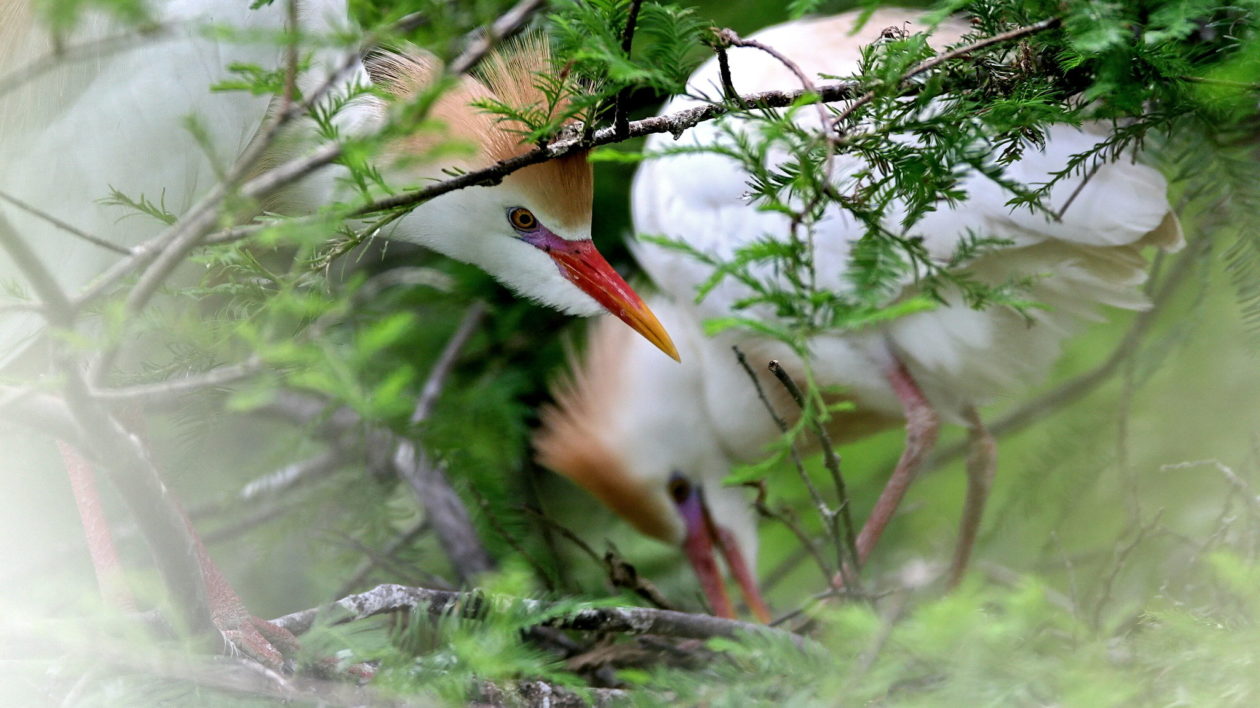
True to its name, the cattle egret is usually seen trailing after herds of cattle or other large mammals. Most heron and egret species feed on fish, but cattle cattle egrets are insectivores, running after mammals to munch up the insects stirred up by hooves or feet. They sometimes supplement their diet with more typical heron fare, like frogs, tadpoles, crayfish, lizards, mollusks, and even small birds or mammals.
These birds are so closely associated with their mammalian foraging friends that one birder I know refers to cows as “cattle egret attractant devices.” And while most birders will see cattle egrets with cattle, they’re quite happy to follow any large, herding mammal, whether it be cows, wildebeest, or elephants.
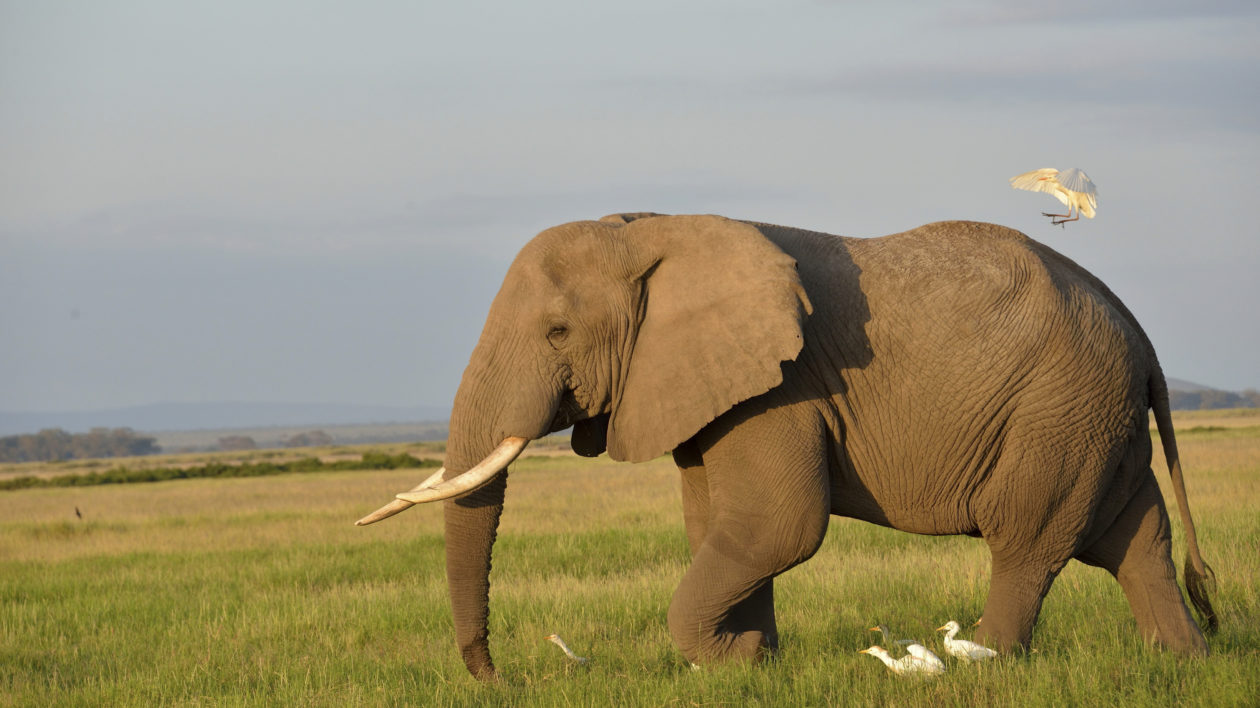
Which brings us to the cattle egret’s native range. About 150 years, you’d have to travel to tropical Africa or the southern Iberian peninsula to see a cattle egret.
Then in the mid 1900s, the species began to creep slowly northwards, establishing small, mostly seasonal populations throughout mainland Europe. They also expanded their range southward into South Africa. But these small forays were nothing compared to the cattle egret’s wave of colonization across the Atlantic.
In 1877 and again in 1882, naturalists on the border between Guyana and Suriname noted the appearance of a strange new bird. The cattle egret had arrived.
The exact circumstances of this first flight across the Atlantic remain a mystery, but science can give us a clue to what might have happened. Scientific models suggest that the first cattle egrets to colonize the New World were probably birds from the African coast, somewhere between Senegal and Zaire, that used the March-April trade winds to fly across the Atlantic in less than a week.
By the late 1940s the species was firmly established on the northern end of the continent, and by the 1970s they were breeding as far south as Chile.
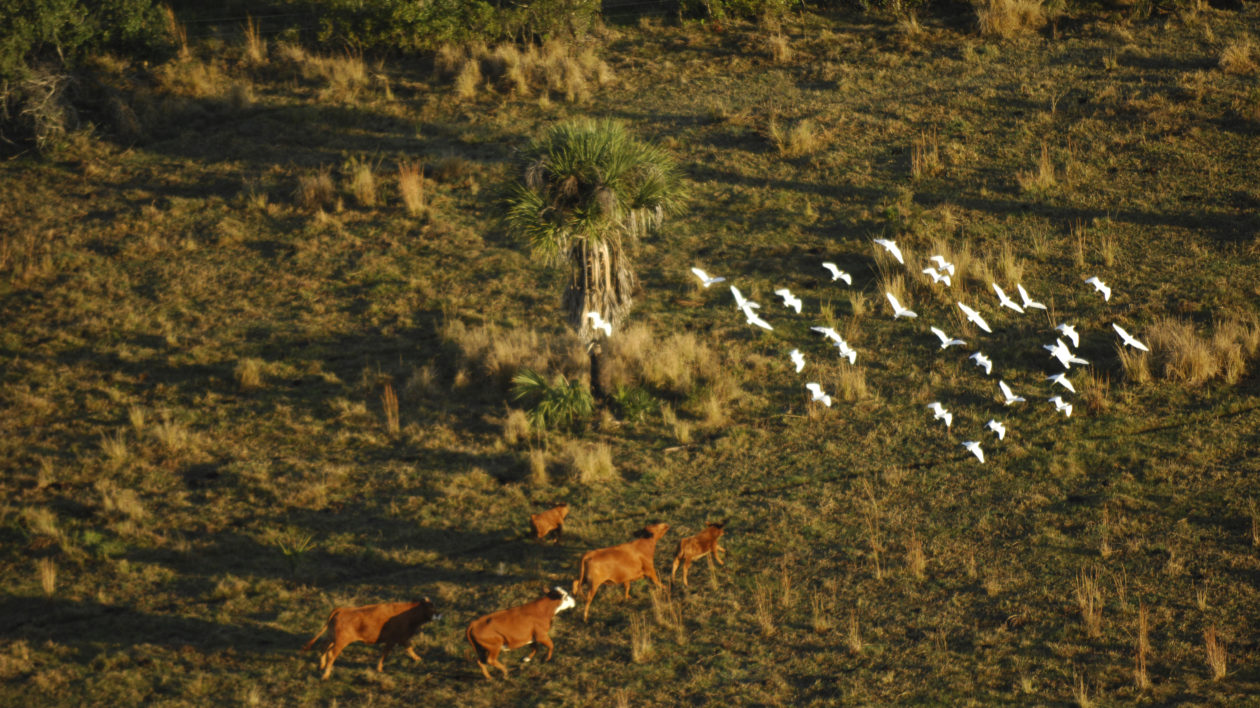
Florida recorded its first cattle egret in 1941, and the species was breeding there by 1953. From Florida cattle egrets spread along the coastlines to the north and west, then pushed gradually inland. By 1962 they were breeding in Canada.
Back across the Atlantic, the species was gradually expanding its range into India and Southeast Asia, although the exact sequence and timing of this migration is not as well documented.
What we do know is that the first cattle egrets arrived in Australia in the 1940s, likely from Asia by way of Indonesia and Melanesia. By the early 1960s they’d hopped across the ditch to New Zealand.
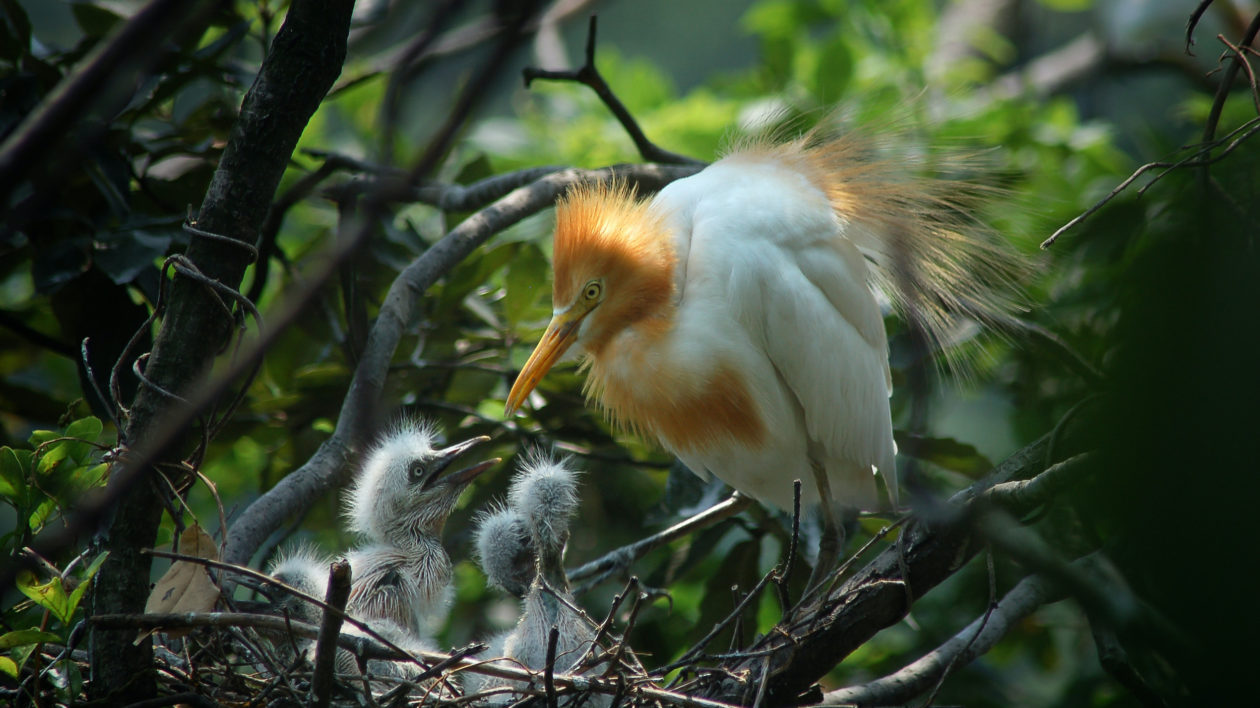
A Helping Hand (Or Cow)
Reasons for the rapid range expansion are a bit of mystery, but scientists have some ideas.
Cattle egrets are a migratory species, with different populations flying long distances to and from their breeding grounds each year. This ability to fly long and far aided them in colonizing new locations, too. It also helped that on arrival they found fields of cattle where, a few centuries earlier, there would have only been forest.
Cattle egrets are a rather adaptable species, capable of surviving even without their ungulate friends. Though their preferred habitat is native grassland, they readily forage in agricultural fields, lawns, parks, sporting fields, road edges, and wastewater treatment plants.
They’ve even been documented feeding along airport runways, catching the insects disturbed by airplanes, or foraging in the wake of farm equipment.
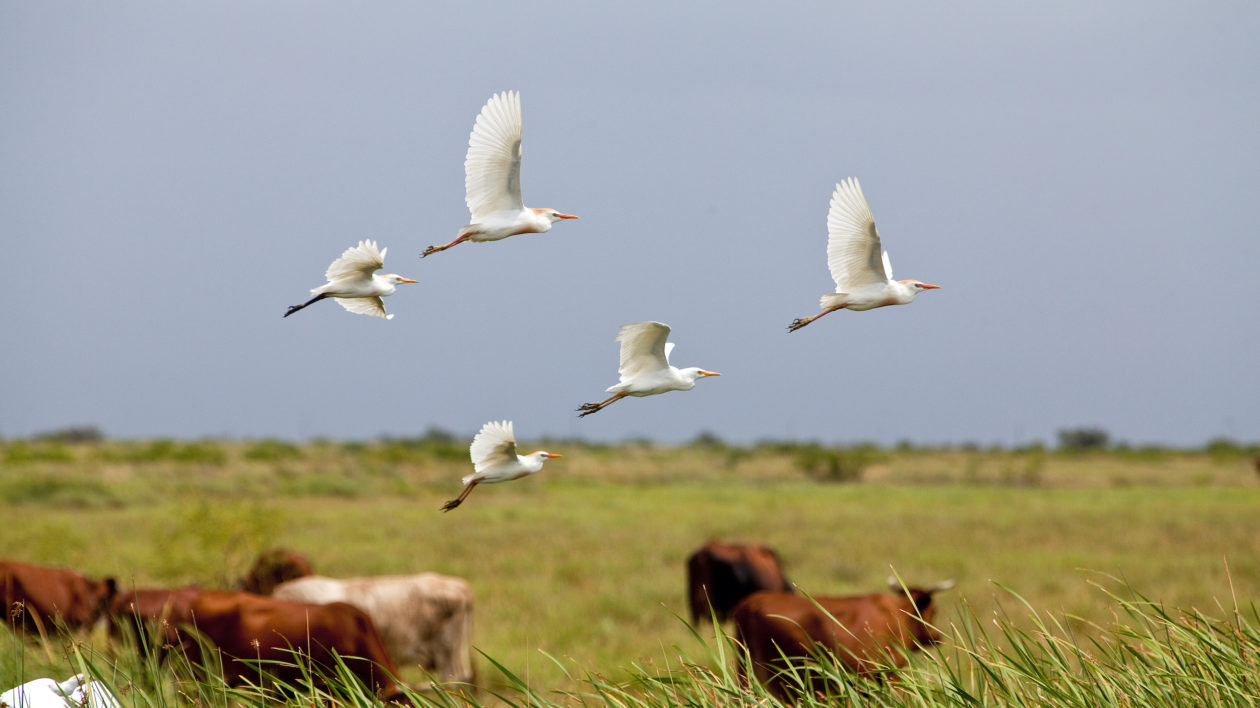
After a century and a half of taking over the world, cattle egret populations are stabilizing in many places. In the United States, their range has actually contracted since the initial surge. They’re found year-round in the states bordering the Gulf of Mexico and parts of California, expanding northwards across the southern half of the country in the summer breeding season. After breeding, they disperse as far as southern Canada.
And while it may seem like they have nowhere else to go, vagrants are still turning up in Alaska and offshore Antarctic Islands.
So there you have it… from a plucky little African species to one of the most widespread and common herons in the world. That’s not too shabby for a bird that spends most of its time as a cow’s sidekick.
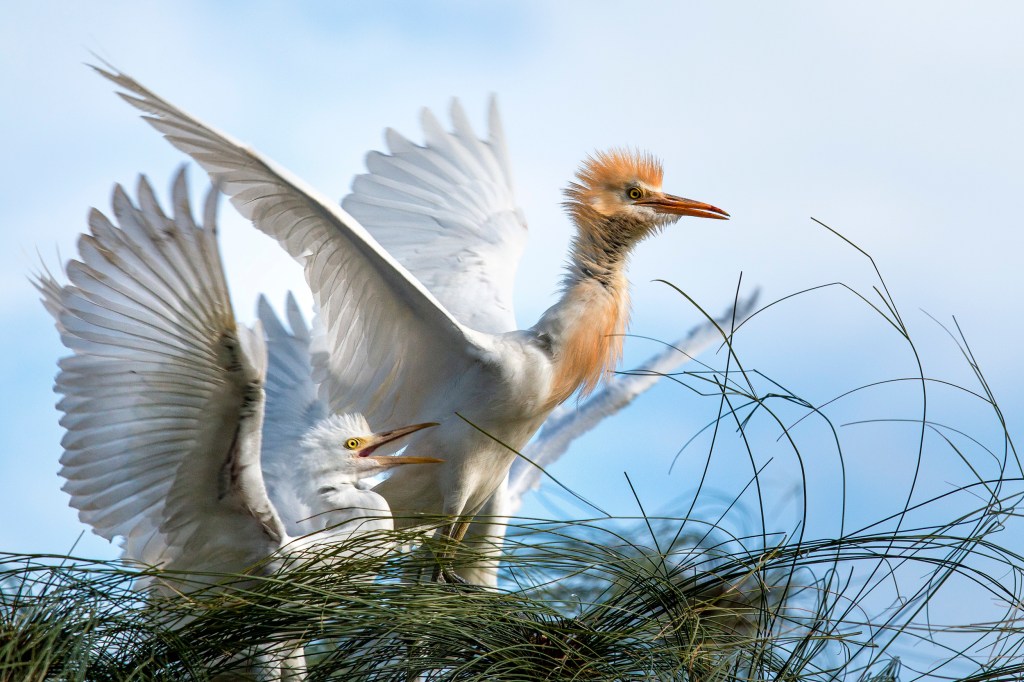



We live in Nowra (NSW) and cattle egrets arrive here every winter and then disappear for the rest of the year. They’re snowy white (non- breeding). I’m wondering where they migrate from?
Ha ha, about 15 years ago I was asked to help lead bird and plant walks at a nearby enchanted forest, on a hill with bottom land trees and plants. This hill is unlike most hills around here with dry slopes, it is a glacial moraine with loess blown on it. On this first event, the driver of wagon hit a sharp edge of a drainage pipe and popped 2 tires. While the group was waiting for the tires to be fixed, an older gentleman told me his friend some 10 years earlier had seen a cattle egret here. Right when he said that, a cattle egret flew by out of the field. I have not seen another one there since, and have been doing these walks ever since. It still blows my mind.